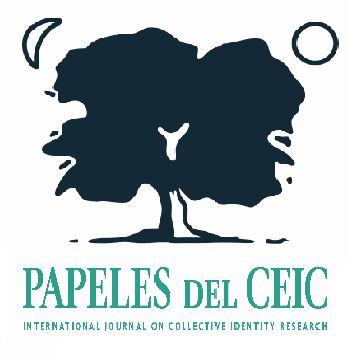Faces of inequality: the effects of the circulation of missing children posters in Brazil
##plugins.themes.bootstrap3.article.main##
##plugins.themes.bootstrap3.article.sidebar##
Abstract
In 1996, a public service specialized in missing children was created in Rio de Janeiro: "SOS Crianças Desaparecidas". The creation of SOS met the requirements of the Brazilian federal law known as the Statute of the Child and Adolescent, and responded to the growing relevance assigned to the phenomenon of missing people in Brazil, especially through the activism of relatives of victims. Drawing from ethnographic research, the paper focuses on the multiple effects caused by one of the main actions carried out by social workers working in SOS: the systematic dissemination of portraits of missing girls and boys, carried out through agreements with NGOs, associations of relatives of missing persons, companies and other partners. I argue that the dissemination of photographs of missing persons has effects not only on the particular trajectory of each case of disappearance thus disseminated, but also on the biographies of other children and adolescents that, though not directly involved in the cases, end up being submitted to interventions by public services and agencies. More specifically, I try to unveil the subtle and determinant role of certain categories and moral judgments in the definition of which other children and adolescents other than victims of disappearance may end up suffering those interventions as a result of the circulation of missing girls and boys portraits
How to Cite
##plugins.themes.bootstrap3.article.details##
disappearance, children and adolescents, portraits, intervention
Papeles del CEIC is distributed under the licence Creative Commons Reconocimiento-NoComercial-SinObraDerivada 3.0 España (CC BY-NC-ND 3.0 ES)
Usted es libre de:
- copiar, distribuir y comunicar públicamente la obra
Bajo las condiciones siguientes:
- Reconocimiento — Debe reconocer los créditos de la obra de la manera especificada por el autor o el licenciador (pero no de una manera que sugiera que tiene su apoyo o apoyan el uso que hace de su obra).
- No comercial — No puede utilizar esta obra para fines comerciales.
- Sin obras derivadas — No se puede alterar, transformar o generar una obra derivada a partir de esta obra.
Entendiendo que:
- Renuncia — Alguna de estas condiciones puede no aplicarse si se obtiene el permiso del titular de los derechos de autor
- Dominio Público — Cuando la obra o alguno de sus elementos se halle en el dominio público según la ley vigente aplicable, esta situación no quedará afectada por la licencia.
- Otros derechos — Los derechos siguientes no quedan afectados por la licencia de ninguna manera:
- Los derechos derivados de usos legítimos u otras limitaciones reconocidas por ley no se ven afectados por lo anterior.
- Los derechos morales del autor;
- Derechos que pueden ostentar otras personas sobre la propia obra o su uso, como por ejemplo derechos de imagen o de privacidad.
- Aviso — Al reutilizar o distribuir la obra, tiene que dejar bien claro los términos de la licencia de esta obra.
The author can use his/her article freely always indicating that it has been published in Papeles del CEIC. International Journal on Collective Identity Research. Any re-edition of the article must be approved by the journal editorial team.


 http://orcid.org/0000-0001-8466-5904
http://orcid.org/0000-0001-8466-5904